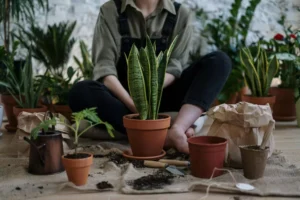Early this year, in response to my complaint of months-long knee pain, a friend suggested I make an appointment with my doctor and possibly get a referral for physical therapy. I had been procrastinating, hoping the pain would go away on its own.
“Think about where you want to be six months from now,” she said. “Still dealing with knee pain … or having taken steps (pun intended) to resolve the issue?” This reasoning clicked with me because I tend to drag my feet when I need to just get the task done. Setting up appointments, organizing my closet and meal planning are just a few of the things I’ve been known to put off.
Keys to productivity
I’ve been thinking about how I can be more productive. Last year, I attended a workshop on executive function. Here’s a helpful explanation of the term:
The phrase “executive function” refers to a set of skills. These skills underlie the capacity to plan ahead and meet goals, display self-control, follow multiple-step directions even when interrupted, and stay focused despite distractions, among others.
Much like an air traffic control system at an airport helps planes on different runways land and take off safely, executive function skills help our brains prioritize tasks, filter distractions, and control impulses.
The article goes on to say that while people are not born with executive function skills, everyone can learn and build these skills throughout life. I immediately thought of people I know who are masters at meeting goals, displaying self-control, and staying focused. And they get a lot done. Whether you’re a master planner or an expert procrastinator, here are three strategies to get more things done.
Plan. There’s a well-known statement by Zig Ziglar that says, “If you aim for nothing, you’ll hit it every time.” I have seen this to be true on a Saturday when I “have no plans.” I’ll stay in my pajamas, drink my coffee, maybe read or scroll social media or watch TV to my heart’s content. While there is nothing wrong with leisure and rest, without a game plan, I have little to show for myself at the end of the day. In contrast, if I make a plan — go to the grocery store, call my mom, take a walk, clean my bedroom, wash the dog — I set myself up for a productive day that contributes to my long-term goals.
There are different ways to plan. My personal favorite is a “to-do list” because I enjoy the sense of accomplishment that comes with checking things off the list. I use a monthly planner to assign important tasks to specific days. A plan should be realistic and specific. Leave enough time for each task and schedule breaks and transition time.
Do difficult tasks first. I can be a big procrastinator. This is especially true when a task seems daunting or I’m dreading it. Maybe you’ve heard the phrase “eat the frog.” Mark Twain is credited with saying, “Eat a live frog first thing in the morning and nothing worse will happen to you the rest of the day.” An Asana article elaborates on the term:
The eat the frog strategy is a prioritization and productivity method used to help people identify difficult tasks. The idea is that you identify one challenging task (the frog) and complete the task first thing in the morning (eating it).
Whether you’re at home or at work, identify the most difficult or daunting task on your to-do list, and do it first. This allows you to tackle a challenge while your mind and will are fresh. Completing the hardest task first provides a sense of accomplishment that can propel you through the rest of your day.
Limit distractions. A big factor in getting things done is achieving a sweet spot of productivity experts call “flow.” Flow is the state of being totally immersed in what you are doing. Whether reading, exercising, writing, creating or playing, your full focus is on that task or activity. In flow, productivity soars. It takes 10-15 minutes to get into flow, which can then last 30 minutes to several hours.
When flow is disrupted, you must repeat the initial 10-15 minutes, decreasing productivity. Research shows that phones are one of the greatest threats to flow. In his article “Your Phone May Be Killing Your Creativity,” Alan Briggs suggests turning off notifications, using airplane mode, avoiding checking your phone first thing in the morning (when you should be eating your frog!), and downloading a phone-limiting app. As you intentionally limit distractions, you will accomplish more.
Why we get things done
In April I made the call to get my knee checked out, and by summer I had started physical therapy. After several months of weekly sessions, I’m happy to report that my knee pain is almost completely gone. I’m thankful my friend suggested I think of future me, and I’m glad I took the steps necessary to address the issue.
Executive function skills such as meeting goals, exercising self-control and increasing focus are a part of a God-honoring life. As believers, we are instructed to bear fruit and do everything to the glory of God. While rest is part of God’s plan for us, habitual procrastination and laziness are not.
Colossians 3:23-24 says:
“Whatever you do, work heartily, as for the Lord and not for men, knowing that from the Lord you will receive the inheritance as your reward. You are serving the Lord Christ.”
Good stewardship requires that we work heartily as unto the Lord. That’s great motivation to push past procrastination and get things done.
Copyright 2024 Suzanne Hadley Gosselin. All rights reserved.











